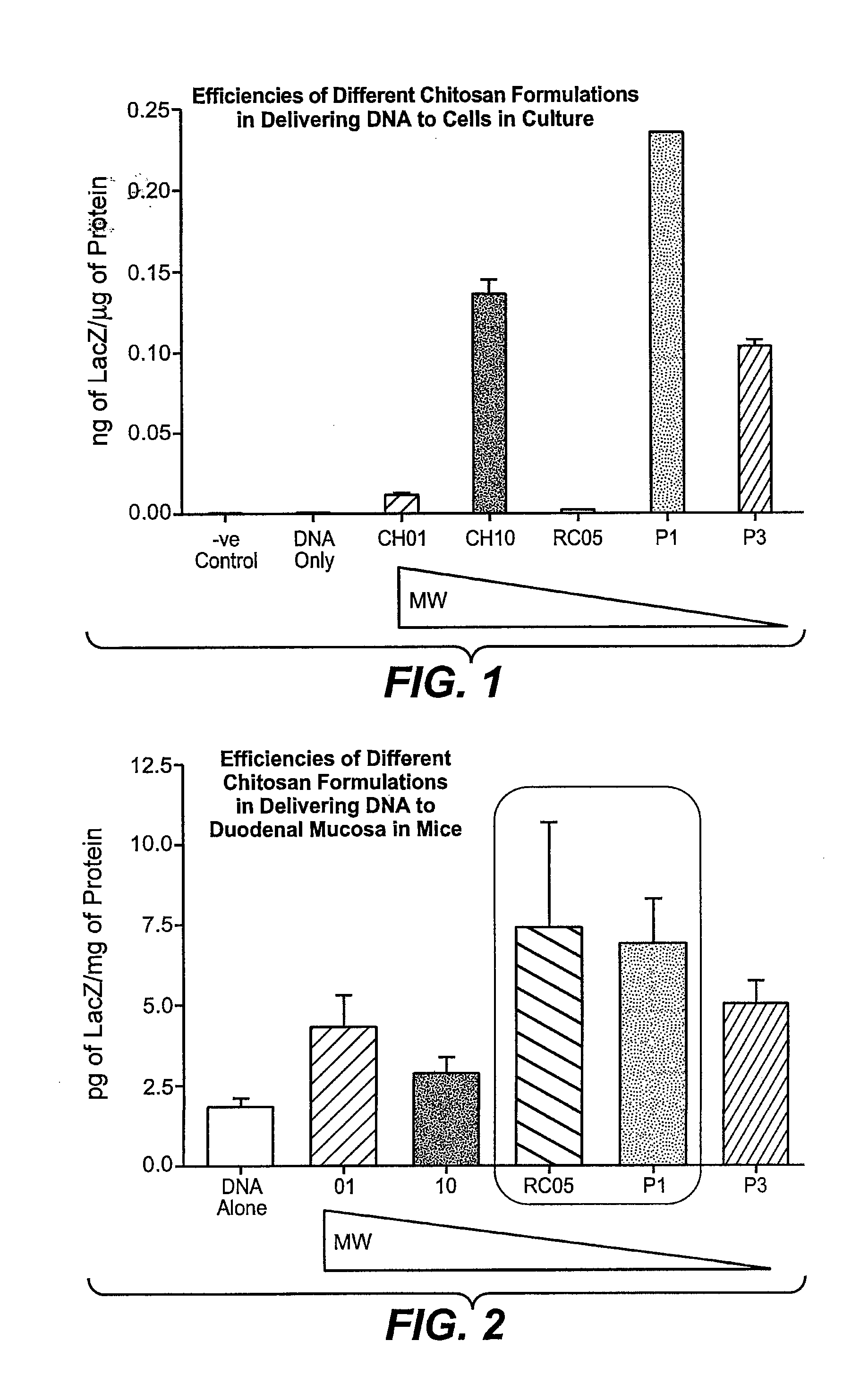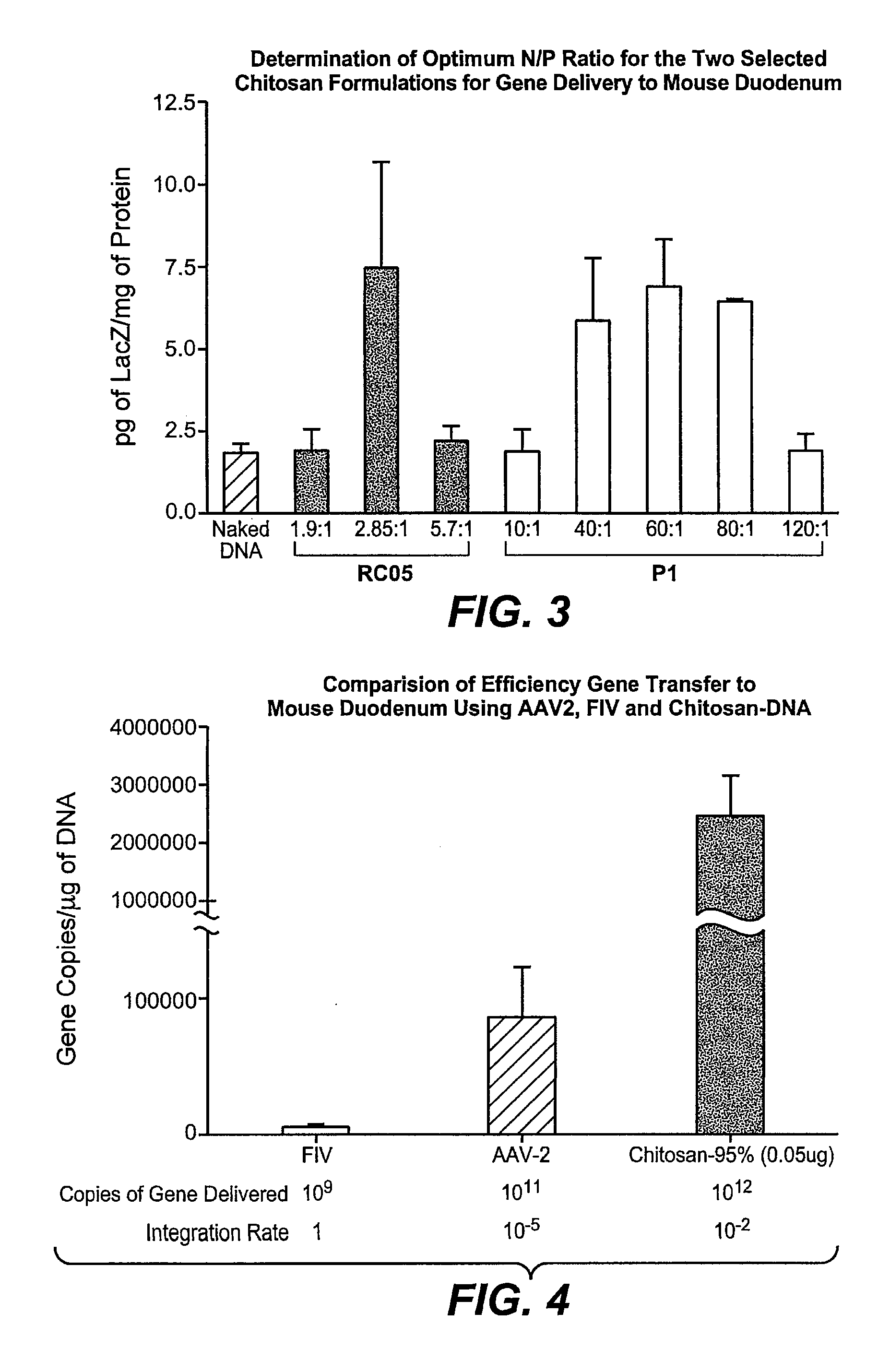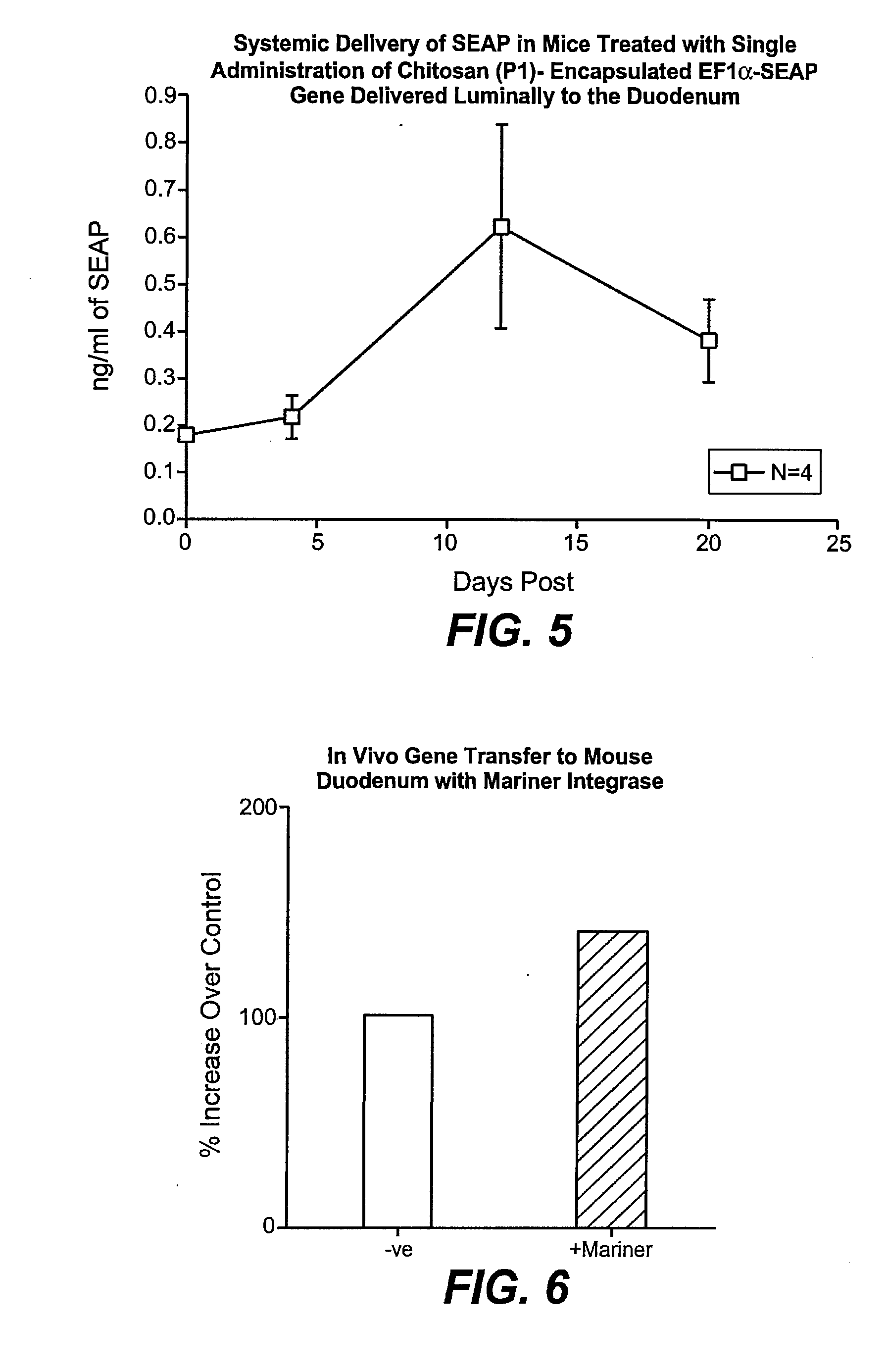Non-Viral Compositions and Methods for Transfecting Gut Cells In Vivo
a gut cell and non-viral technology, applied in the field of non-viral compositions and methods for transfecting gut cells in vivo, can solve the problems of poor transfection efficiency, poor vivo application suitability, and low molecular weight chitosan/dna complexes that are more soluble but less stable in solution
- Summary
- Abstract
- Description
- Claims
- Application Information
AI Technical Summary
Benefits of technology
Problems solved by technology
Method used
Image
Examples
Embodiment Construction
[0200]Gut Mucosal Cells
[0201]As used herein, “gut mucosal cell” refers to a cell of the gut mucosa. Included among gut mucosal cells are endocrine cells, non-endocrine cells, and precursors thereof. Gut mucosal precursor cells include stem cells. A gut mucosal precursor cell is directly or indirectly a precursor of a differentiated cell type of the gut mucosa. Gut mucosal precursor cells include undifferentiated gut mucosal cells. Gut mucosal precursor cells give rise to major cell types of the gut mucosa, including endocrine cells and non-endocrine cells. A gut endocrine cell precursor cell is a precursor of a gut mucosal cell that is a gut endocrine cell, e.g., a K cell.
[0202]Particular examples of gut mucosal cells include endocrine cells, such as K cells, L-cells, S-cells, G-cells, D-cells, I-cells, Mo-cells, Gr-cells, and non-endocrine cells such as absorptive enterocytes. Endocrine cells are generally characterized by their ability to secrete a synthesized protein into the blo...
PUM
| Property | Measurement | Unit |
|---|---|---|
| molecular weight | aaaaa | aaaaa |
| molecular weight | aaaaa | aaaaa |
| molecular weight | aaaaa | aaaaa |
Abstract
Description
Claims
Application Information
 Login to View More
Login to View More - R&D
- Intellectual Property
- Life Sciences
- Materials
- Tech Scout
- Unparalleled Data Quality
- Higher Quality Content
- 60% Fewer Hallucinations
Browse by: Latest US Patents, China's latest patents, Technical Efficacy Thesaurus, Application Domain, Technology Topic, Popular Technical Reports.
© 2025 PatSnap. All rights reserved.Legal|Privacy policy|Modern Slavery Act Transparency Statement|Sitemap|About US| Contact US: help@patsnap.com



